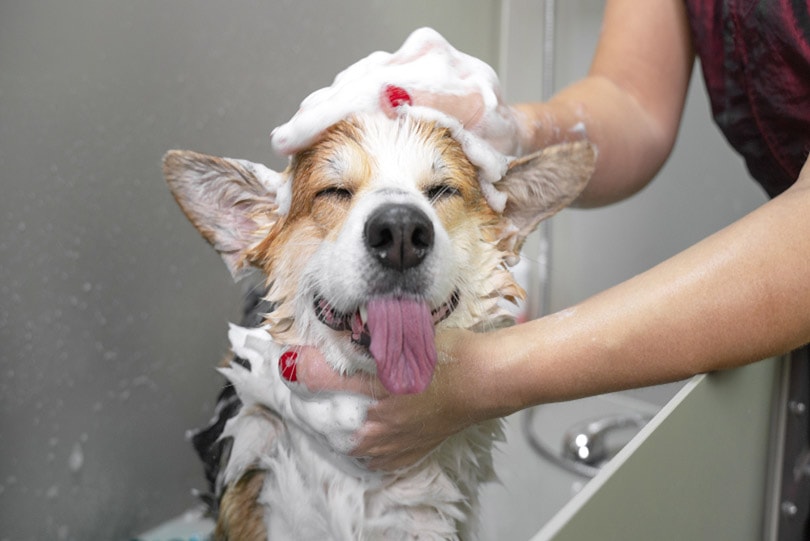How To Teach Your Dog to Dance in 9 Simple Steps

Updated on
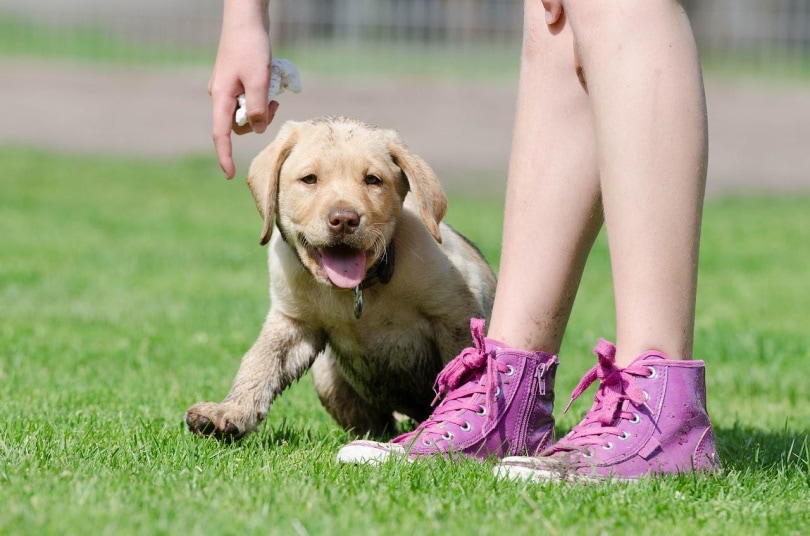
Training is a vital part of being a dog owner. It is excellent for instilling proper behavior, keeping dogs mentally stimulated, and bonding with your pup. Not to mention, it is fun to show off all of the cool tricks your furry friend can do!
Is dancing the newest lesson you are interested in? Are you feeling a little lost on where to start? Well, look no further! This article will provide tips you need to consider before starting and will simplify the process of teaching your dog to dance.
Before You Start
Here are a few tips for preparing your dog for training.
1. Have Plenty of Treats
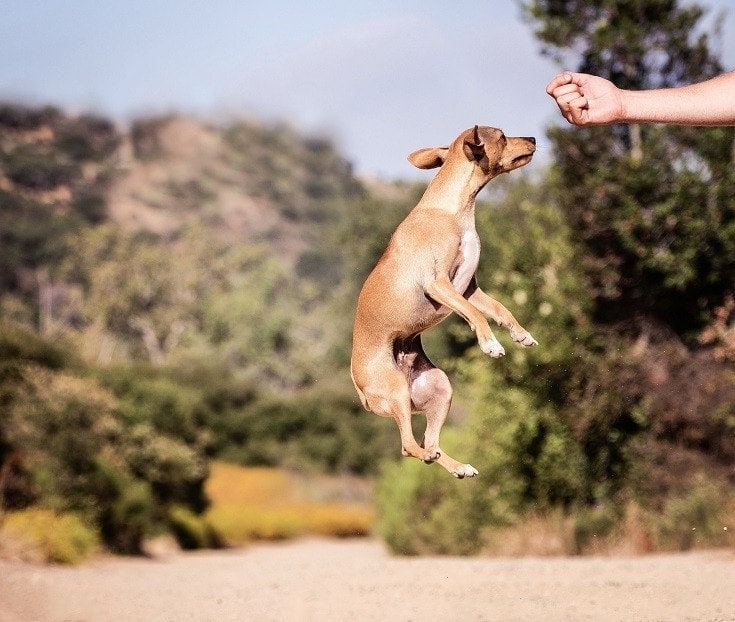
You must be well-stocked on treats before you begin training. If you run out of goodies to give your pup, they will quickly lose interest in what you are trying to teach them. The treats are a necessary incentive to keep your dog engaged. Choose healthy, species-appropriate, low-calorie treats and cut them into tiny portions to make the best out of each one.
2. Find the Right Spot to Train
Location is everything when it comes to training. Your dog needs an open space that is free from distractions. If you pick a place right beside a busy street, the intrusion of the bustling cars may make it a poor place to train. Dogs can be easily distracted, and eliminating potential distractions is essential.
3. Dogs have Smaller Attention Spans
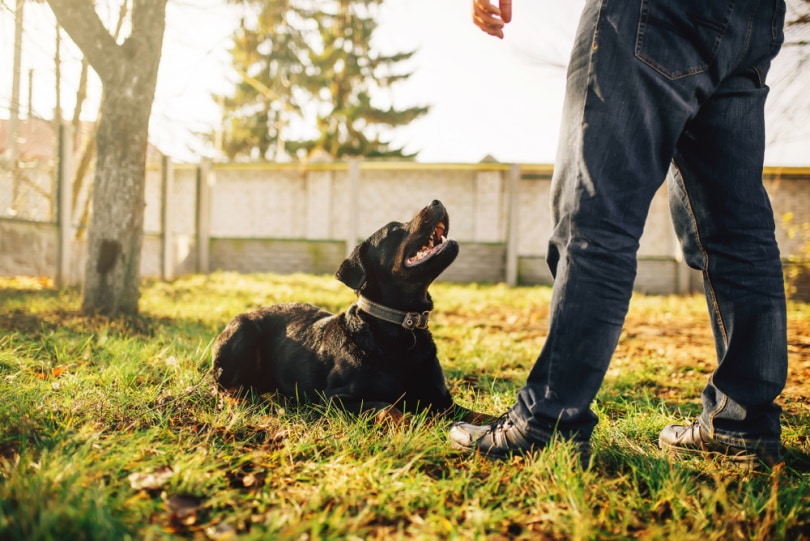
Dogs do not have the enduring attention span that most humans do; they cannot focus on one task for hours at a time. Instead, training should be in short increments broken up over a series of days, weeks, or even months. Plan accordingly to train for 10 minutes or so each day.
4. Your Dog Needs to Know How to Sit
To teach your dog how to dance, it is easiest if they first learn how to sit. If your dog does not yet know how to sit on command, it may not be ready for dancing, which is a little more complex.
General Dog Training Tips
Dog training may feel daunting, especially as you dive into more complicated lessons. If you feel a bit overwhelmed, here are some tips that may help you grow more confident in your ability to teach your canine companion even the hardest of tricks.
1. Learn Your Dog’s Body Language
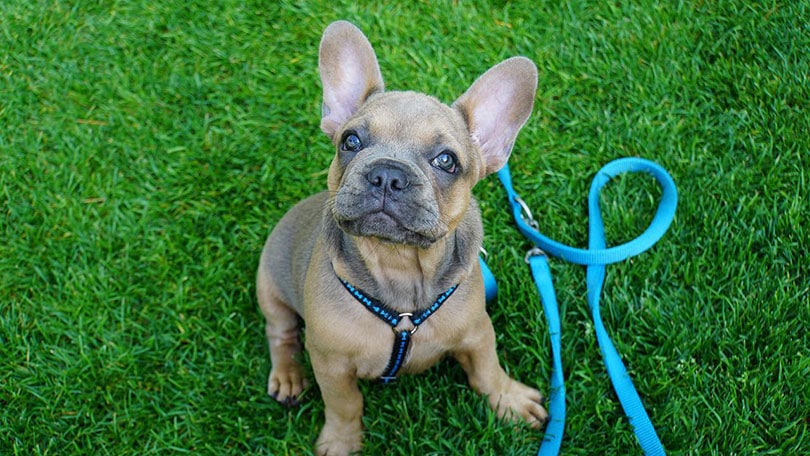
Dogs often communicate through body language. Your dog can tell you if he is excited, tired, or agitated based on the way he acts or positions himself. Learning the nonverbal cues is key to training your dog since you can understand what your dog needs at the moment. To learn more about how dogs communicate with body language, take a look at this article by the American Kennel Club.
2. Use Special Treats
If you give your dog a certain kind of treat outside of training, consider buying a special treat that you use only for training purposes. This can help your dog to get invested in the training and stay focused for longer, again choose healthy, low-calorie, and species-appropriate training treats.
3. Be Quick with the Treats
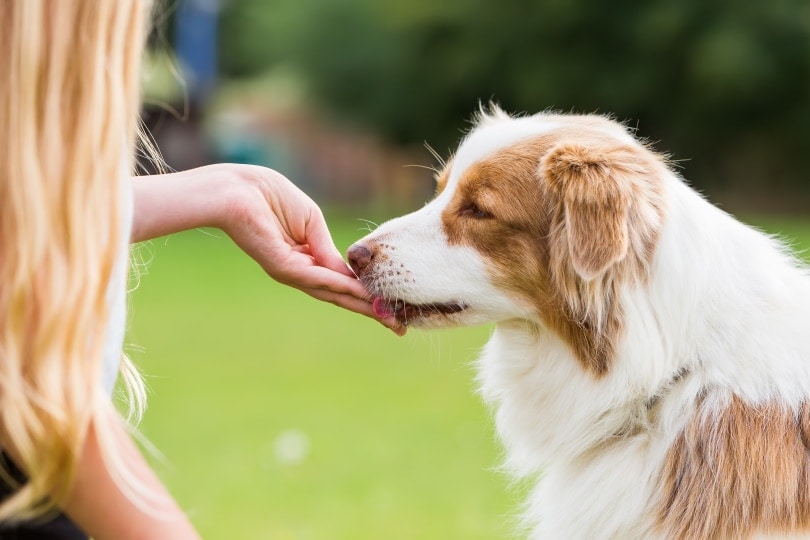
It is best to be quick with giving out rewards; this helps avoid confusion about what behavior you try to enforce. If you hesitate too long to give the treat, you may accidentally reinforce the wrong behavior in your dog.
4. Stay Positive
Even when things get difficult, try to keep your head up! Your dog can sense when you are feeling down, which will make him upset.
Teach Your Dog to Dance
Now that you have your treats ready, your location prepared, and your confidence up, it is time to learn how to teach your dog to dance.
1. Bring Your Dog to Your Typical Training Location
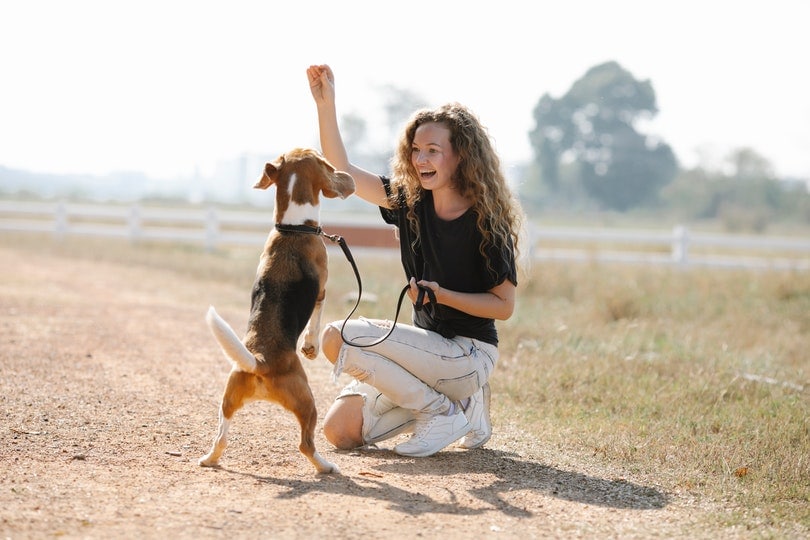
Ideally, you have trained your dog to sit. If possible, take your dog to the same training location. If he can associate this place with activity and treats, it may help him to retain his focus.
2. Start in the Sitting Position
This is why it is important that your dog already knows how to sit. Command your dog to sit, but do not yet give him the treat.
3. Display the Treat
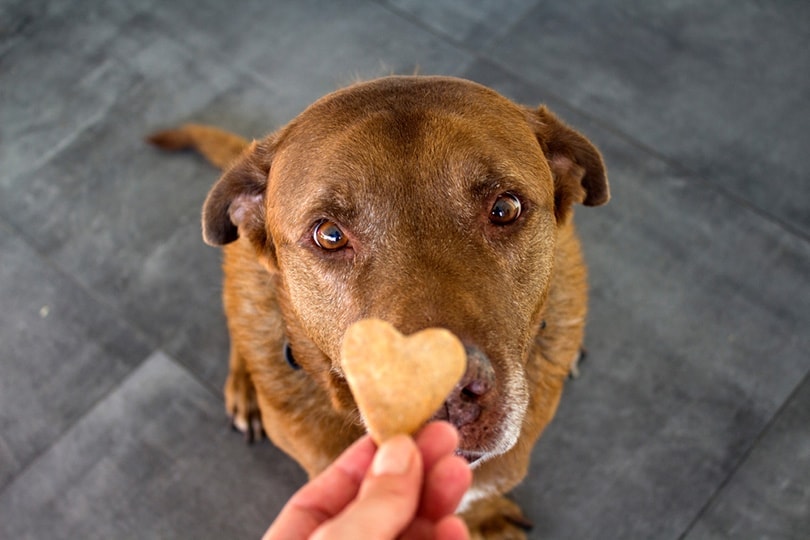
Hold the treat where your dog can see it. Hover the treat just above your dog’s nose so he has to look upward to see it.
4. Slowly Lift the Treat
Now, slowly lift your hand, moving it just behind your dog’s head. He will want to keep his eyes on the treat and will be encouraged to stand up slowly. As he lifts himself onto his hind legs, verbally command him to stand. Do so until he stands fully on his hind legs to get the treat.
5. Reward Time!
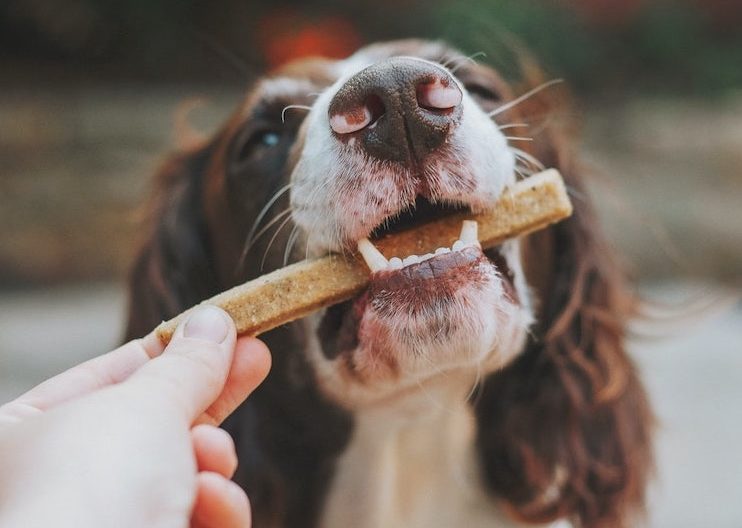
Praise your dog for a job well done and give him the treat. Although he has not yet learned to dance, he has learned an essential part of the process. This is worth celebrating, and you should be sure to convey your excitement to him.
6. Repeat
Continuously repeat the previous steps until your dog is confident in his ability to stand on his hind legs and follow your command. This may take several days, and don’t try to make him learn it all in one sitting!
7. Start to Spin the Treat
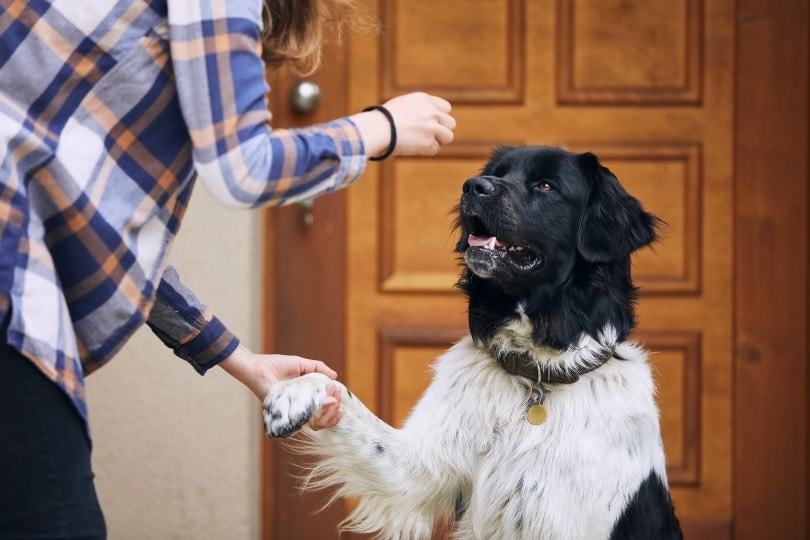
Once your dog has become adept at standing on command, it is time to add the next element to the process. Once you get your dog on his hind legs, do not give him the treat. Instead, spin it around in a circle over his head. Verbally command him to dance.
8. Reward Time (Again)!
When your dog makes a full circle, give him the treat and lots and lots of praise! Your dog finally did it!
9. Repeat Some More
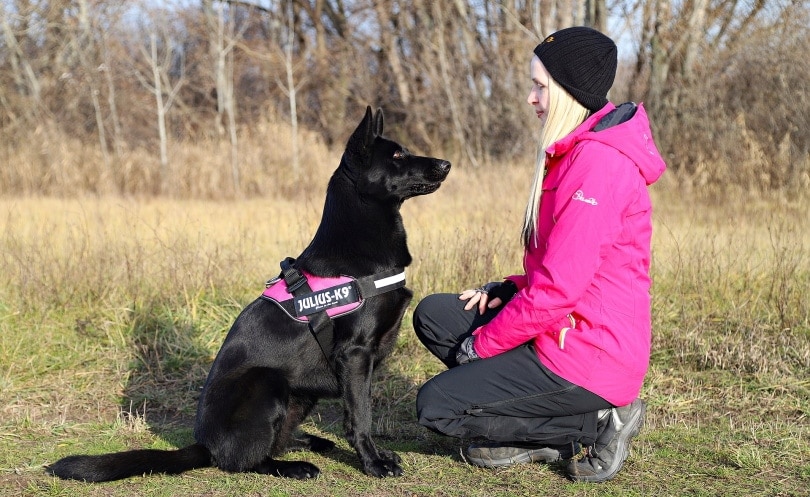
Now that your dog has danced, it is time to run through the entire process… many, many times. This will help your dog to grow in confidence, ensuring that he responds appropriately when you give a command. Like before, this repetition should not occur all in one day, but instead should take place over a longer period.
In Conclusion
Although training a dog is a lot of work and dedication, it can be just as rewarding for you as the treats are for your pup. As you train your dog, remember to be patient with him and yourself. You are both learning something new, and mistakes are bound to happen. Just laugh them off and have fun!
See also:
- How To Teach Your Dog To Skateboard in 6 Simple Steps
- How to Train a Dog Not to Jump in 2 Simple Steps
Featured Image Credit: Katrin B, Pixabay





